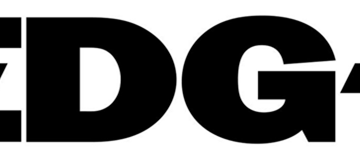Marisa Demers | Department of Aeronautics and Astronautics
2024-11-15 16:00:00
news.mit.edu

At age 22, aerospace engineer Eric Shaw worked on some of the world’s most powerful airplanes, yet learning to fly even the smallest one was out of reach. Just out of college, he could not afford civilian flight school and spent the next two years saving $12,000 to earn his private pilot’s license. Shaw knew there had to be a better, less expensive way to train pilots.
Now a graduate student at the MIT Sloan School of Management’s Leaders for Global Operations (LGO) program, Shaw joined the MIT Department of Aeronautics and Astronautics’ (AeroAstro) Certificate in Aerospace Innovation program to turn a years-long rumination into a viable solution. Along with fellow graduate students Gretel Gonzalez and Shaan Jagani, Shaw proposed training aspiring pilots on electric and hybrid planes. This approach reduces flight school expenses by up to 34 percent while shrinking the industry’s carbon footprint.
The trio shared their plan to create the Aeroelectric Flight Academy at the certificate program’s signature Pitchfest event last spring. Equipped with a pitch deck and a business plan, the team impressed the judges, who awarded them the competition’s top prize of $10,000.
What began as a curiosity to test an idea has reshaped Shaw’s view of his industry.
“Aerospace and entrepreneurship initially seemed antithetical to me,” Shaw says. “It’s a hard sector to break into because the capital expenses are huge and a few big dogs have a lot of influence. Earning this certificate and talking face-to-face with folks who have overcome this seemingly impossible gap has filled me with confidence.”
Disruption by design
AeroAstro introduced the Certificate in Aerospace Innovation in 2021 after engaging in a strategic planning process to take full advantage of the research and ideas coming out of the department. The initiative is spearheaded by AeroAstro professors Olivier L. de Weck SM ʼ99, PhD ʼ01 and Zoltán S. Spakovszky SM ʼ99, PhD ʼ00, in partnership with the Martin Trust Center for MIT Entrepreneurship. Its creation recognizes the aerospace industry is at an inflection point. Major advancements in drone, satellite, and other technologies, coupled with an infusion of nongovernmental funding, have made it easier than ever to bring aerospace innovations to the marketplace.
“The landscape has radically shifted,” says Spakovszky, the Institute’s T. Wilson (1953) Professor in Aeronautics. “MIT students are responding to this change because startups are often the quickest path to impact.”
The certificate program has three requirements: coursework in both aerospace engineering and entrepreneurship, a speaker series primarily featuring MIT alumni and faculty, and hands-on entrepreneurship experience. In the latter, participants can enroll in the Trust Center’s StartMIT program and then compete in Pitchfest, which is modeled after the MIT $100K Entrepreneurship Competition. They can also join a summer incubator, such as the Trust Center’s MIT delta v or the Venture Exploration Program, run by the MIT Office of Innovation and the National Science Foundation’s Innovation Corps.
“At the end of the program, students will be able to look at a technical proposal and fairly quickly run some numbers and figure out if this innovation has market viability or if it’s completely utopian,” says de Weck, the Apollo Program Professor of Astronautics and associate department head of AeroAstro.
Since its inception, 46 people from the MIT community have participated and 13 have fulfilled the requirements of the two-year program to earn the certificate. The program’s fourth cohort is underway this fall with its largest enrollment yet, with 21 postdocs, graduate students, and undergraduate seniors across seven courses and programs at MIT.
A unicorn industry
When Eddie Obropta SM ʼ13, SM ʼ15 attended MIT, aerospace entrepreneurship meant working for SpaceX or Blue Origin. Yet he knew more was possible. He gave himself a crash course in entrepreneurship by competing in the MIT $100K Entrepreneurship Competition four times. Each year, his ideas became more refined and battle-tested by potential customers.
In his final entry in the competition, Obropta, along with MIT doctoral student Nikhil Vadhavkar and Forrest Meyen SM ’13 PhD ’17, proposed using drones to maximize crop yields. Their business, Raptor Maps, won. Today, Obropta serves as the co-founder and chief technology officer of Raptor Maps, which builds software to automate the operations and maintenance of solar farms using drones, robots, and artificial intelligence
While Obropta received support from AeroAstro and MIT’s existing entrepreneurial ecosystem, the tech leader was excited when de Weck and Spakovszky shared their plans to launch the Certificate in Aerospace Innovation. Obropta currently serves on the program’s advisory board, has been a presenter at the speaker series, and has served as a mentor and judge for Pitchfest.
“While there are a lot of excellent entrepreneurship programs across the Institute, the aerospace industry is its own unique beast,” Obropta says. “Today’s aspiring founders are visionaries looking to build a spacefaring civilization, but they need specialized support in navigating complex multidisciplinary missions and heavy government involvement.”
Entrepreneurs are everywhere, not just at startups
While the certificate program will likely produce success stories like Raptor Maps, that is not the ultimate goal, say de Weck and Spakovszky. Thinking and acting like an entrepreneur — such as understanding market potential, dealing with failure, and building a deep professional network — are characteristics that benefit everyone, no matter their occupation.
Paul Cheek, executive director of the Trust Center who also teaches a course in the certificate program, agrees.
“At its core, entrepreneurship is a mindset and a skill set; it’s about moving the needle forward for maximum impact,” Cheek says. “A lot of organizations, including large corporations, nonprofits, and the government, can benefit from that type of thinking.”
That form of entrepreneurship resonates with the Aeroelectric Flight Academy team. Although they are meeting with potential investors and looking to scale their business, all three plan to pursue their first passions: Jagani hopes to be an astronaut, Shaw would like to be an executive at one of the “big dog” aerospace companies, and Gonzalez wants to work for the Mexican Space Agency.
Gonzalez, who is on track to earn her certificate in 2025, says she is especially grateful for the people she met through the program.
“I didn’t know an aerospace entrepreneurship community even existed when I began the program,” Gonzalez says. “It’s here and it’s filled with very dedicated and generous people who have shared insights with me that I don’t think I would have learned anywhere else.”
Support Techcratic
If you find value in Techcratic’s insights and articles, consider supporting us with Bitcoin. Your support helps me, as a solo operator, continue delivering high-quality content while managing all the technical aspects, from server maintenance to blog writing, future updates, and improvements. Support Innovation! Thank you.
Bitcoin Address:
bc1qlszw7elx2qahjwvaryh0tkgg8y68enw30gpvge
Please verify this address before sending funds.
Bitcoin QR Code
Simply scan the QR code below to support Techcratic.

Please read the Privacy and Security Disclaimer on how Techcratic handles your support.
Disclaimer: As an Amazon Associate, Techcratic may earn from qualifying purchases.






























































![SABRENT [3-Pack 22AWG Premium 6ft USB-C to USB A 3.0 Sync and Charge Cables [Black]…](https://techcratic.com/wp-content/uploads/2025/09/81SQ13LNwfL._SL1500_-360x180.jpg)



































